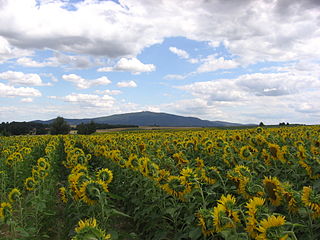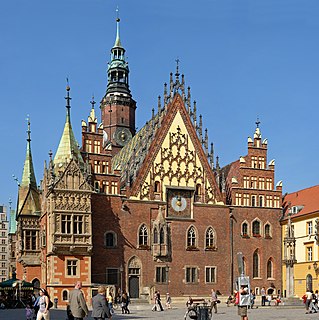
Wrocław is a city in western Poland and the largest city in the historical region of Silesia. It lies on the banks of the River Oder in the Silesian Lowlands of Central Europe, roughly 350 kilometres (220 mi) from the Baltic Sea to the north and 40 kilometres (25 mi) from the Sudeten Mountains to the south. The population of Wrocław in 2018 was 639,258, making it the fourth-largest city in Poland and the main city of the Wrocław agglomeration.

Prokop Sieniawski was a Polish noble.

Marek Sobieski was a Polish noble (szlachcic), starosta of Krasnystaw and Jaworów, older brother of King John III Sobieski of Poland. He graduated from Nowodworski College in Kraków and Kraków Academy, then traveled and studied in Western Europe. After returning to Poland in 1648 he fought against the Cossacks and Tatars at Zbaraż and Beresteczko. He was taken captive by Tatars in 1652 and then killed by Cossacks.

Spytek of Melsztyn was a Polish nobleman (szlachcic) of the Leliwa coat of arms.

The Tadeusz Kościuszko Land Forces Military University is a Polish Land Forces Military University in Wrocław, Poland.
Leszek of Masovia was a Polish prince from the Piast dynasty, the Duke of Masovia from 1173 until his death. He was the only son of Bolesław IV the Curly, Duke of Masovia and High Prince of Polan, who survived father. After his father death he inherited Masovia. At the beginning, Leszek ruled under the guardianship of his uncle Casimir II the Just. He was a man of poor health. For a short time he supported his other uncle, Mieszko III the Old, but later decided to reconciled with Kazimierz II, who after Leszek's death inherited his duchy.

Polski Słownik Biograficzny is a Polish-language biographical dictionary, comprising an alphabetically arranged compilation of authoritative biographies of some 25,000 notable Poles and of foreigners who have been active in Poland – famous as well as less well known persons, from Popiel, Piast Kołodziej and Mieszko I, at the dawn of Polish history, to persons who died in the year 2000. The Dictionary, published incrementally since 1935, is a work in progress. It currently covers entries from A to S and its completion is expected about 2030.
Roman Wapiński was a Polish historian, lecturer at the University of Gdańsk. He specialized in the history of the Second Polish Republic and right-wing National Democracy political camp, being the foremost historian of National Democracy. Wapiński was considered one of the foremost Polish historians.
Franciszek Ksawery Kasparek was a Polish jurist, professor of law and rector of Kraków University, founder of the first chair in international law in Poland, and member of the Polish Academy of Learning in Kraków.
Piotr Perkowski was a Polish composer.
â Włodzimierz Józef Godłowski was a Polish neurologist and psychologist. A professor of the Stefan Batory University in Wilno (Vilnius), he was also an officer in the Polish Army during the German and Soviet invasion of Poland. He was made a prisoner of war by the Soviets in 1939 and was murdered in the Katyn massacre in 1940.
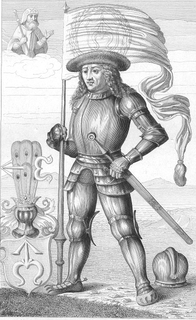
Jakub Szydłowiecki was a Polish nobleman and politician. In the years 1493-1501 he was Burgrave of Kraków and was a courtier of the king from 1496, Treasurer of the Crown Court in 1497, Grand Teasurer of the Crown from 1501 to 1506, and castellan and starost of Sandomierz, Sochaczew and Łęczyca.
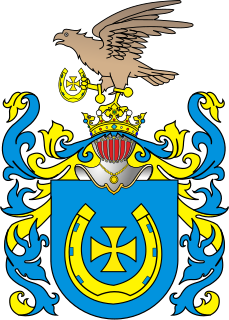
Niemirowicz-Szczytt was a noble Polish family. It used Jastrzębiec coat of arms. They also used another forms of surname like Niemirowicz-Szczyt, Szczytt-Niemirowicz, Szczyt-Niemirowicz, Szczytt or Szczyt.
Piotr Abramowicz was a Polish Jesuit.
Krystyn Szelejewski was a Polish nobleman and the castellan of Krzywiń.
Baldwin of Kraków was a Bishop of Kraków in the years 1102-1109.
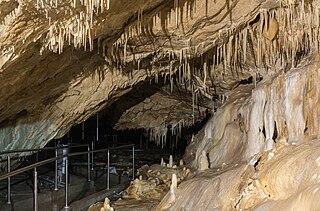
Jaskinia Niedźwiedzia - is the longest cave in Śnieżnik Mountains part of Sudety mountains discovered in 1966, located near village Kletno in Poland. Famous from many excavations of the cave bear.
Ścibor z Gościeńczyc was a Polish Roman Catholic priest and the bishop of Płock since 1463.
Andrzej from Wiślica was bishop of Poznań (nominate) and diplomat in the service of Władysław Łokietek and Casimir the Great.
Piotr Damasiewicz also known as Damaś is a Polish composer, trumpeter and music curator.
